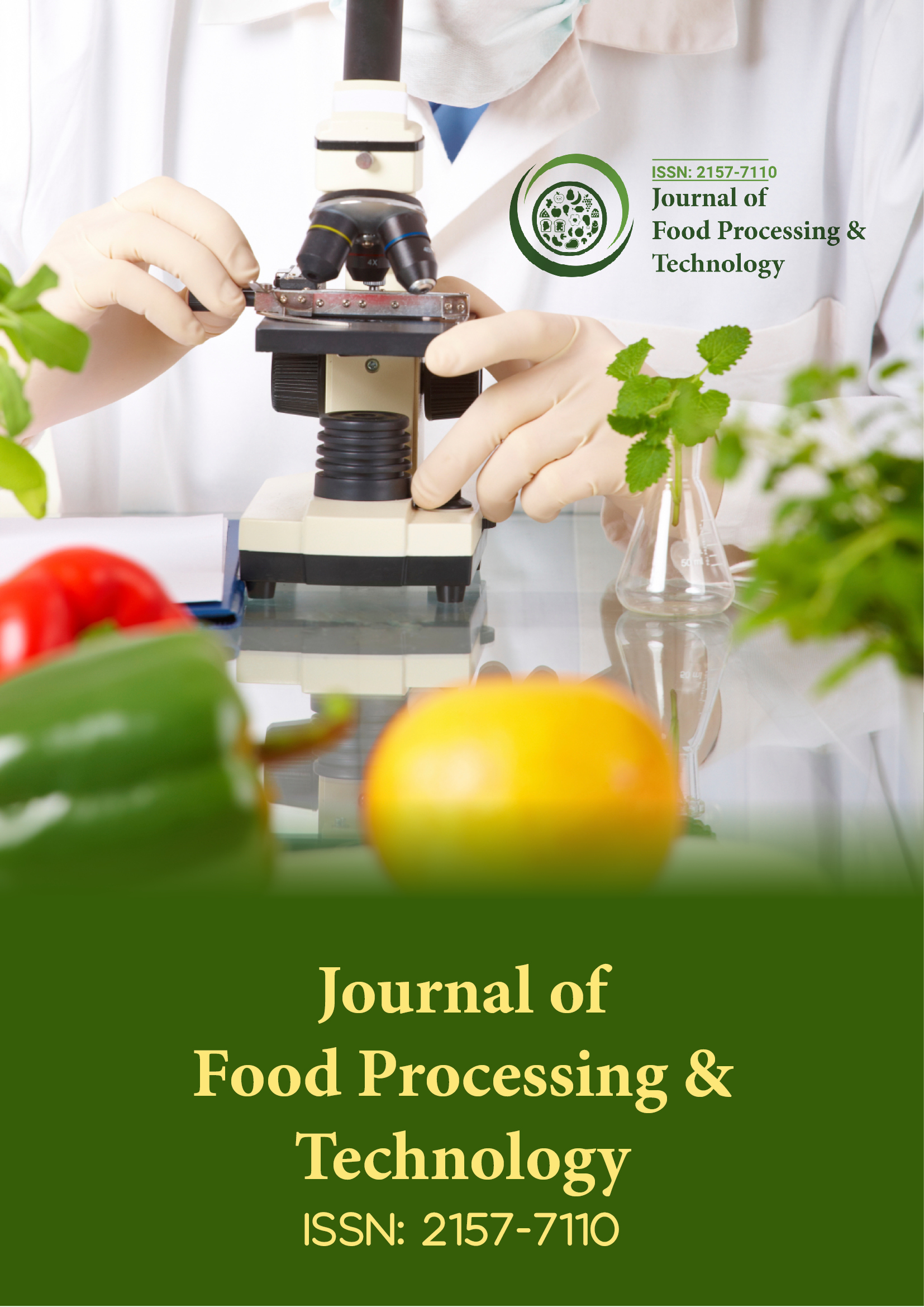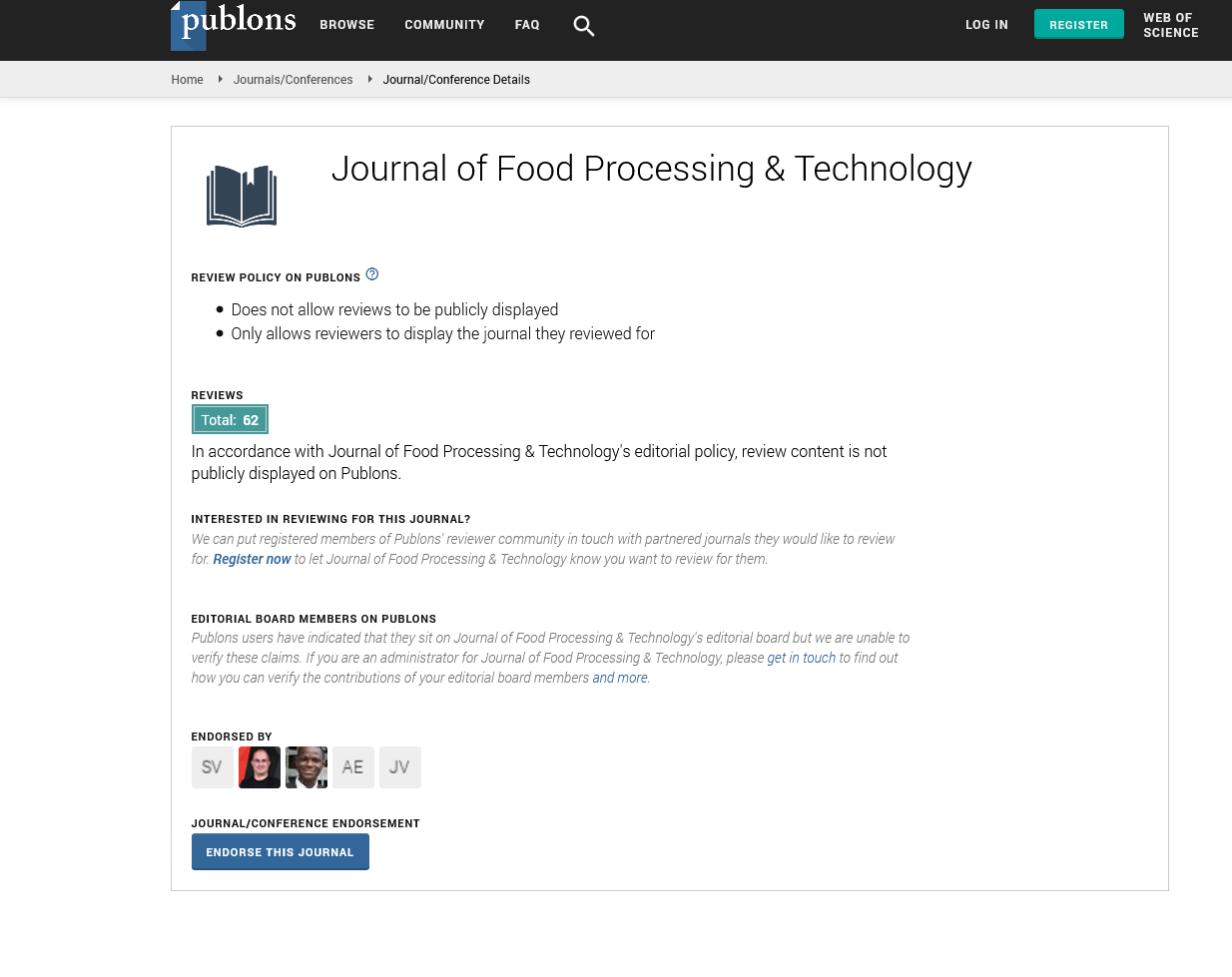Indexed In
- Genamics JournalSeek
- Academic Keys
- JournalTOCs
- China National Knowledge Infrastructure (CNKI)
- Access to Global Online Research in Agriculture (AGORA)
- Centre for Agriculture and Biosciences International (CABI)
- RefSeek
- Directory of Research Journal Indexing (DRJI)
- Hamdard University
- EBSCO A-Z
- OCLC- WorldCat
- Scholarsteer
- SWB online catalog
- Publons
- Euro Pub
- Google Scholar
Useful Links
Share This Page
Journal Flyer

Open Access Journals
- Agri and Aquaculture
- Biochemistry
- Bioinformatics & Systems Biology
- Business & Management
- Chemistry
- Clinical Sciences
- Engineering
- Food & Nutrition
- General Science
- Genetics & Molecular Biology
- Immunology & Microbiology
- Medical Sciences
- Neuroscience & Psychology
- Nursing & Health Care
- Pharmaceutical Sciences
Extraction of chlorogenic acid with antioxidant properties from spent coffee grounds using EtOH/water mixtures
26th Euro-Global Summit on Food and Beverages
April 17-18, 2023 | Rome, Italy
Ibtissam Bouhzam, Rosa Cantero, Merce Balcells, Maria Margallo, Ruben Aldaco, Alba Bala, Pere Fullana-i-Palmer and Rita Puig
University of Lleida, Spain University of Cantabria, Spain UNESCO Chair in Life Cycle and Climate Change ESCI-UPF, Spain
Scientific Tracks Abstracts: J Food Process Technol
Abstract:
Statement of the problem: The agricultural industry has become a critical sector in Europe. In 2020, 20% of global food production was wasted. The manufacturing of coffee results in the production of significant amounts of waste such as Spent Coffee Grounds (SCG), causing environmental problems. Spent coffee grounds are rich in polyphenols, including chlorogenic acid and can be used as an alternative to obtain those substances. Objective: The purpose of this study is to evaluate the capacity of ethanol to extract valuable substances such as Chlorogenic Acid (CA) that is known for its antioxidant properties by testing different proportions of EtOH/ water through solid/liquid extraction. Methods: Mixtures of ethanol/water (0%, 20%, 40%, 60%, 80%, 96%) were tested using solid-liquid extraction assisted by vortex shaken and ultrasound (at room T and at 50°C). A solvent/SCG ratio is 5.7 mL/g, with only 1 min extraction time were used. Quantification of CA was conducted in a HPLC equipped with a UV/Visible diode at a wavelength of 278 nm. The mobile phase was consisted of acetonitrile 7% v/v and 93% v/v water. Results: Vortex yielded the greatest amount of chlorogenic acid with 0.696 mg CA/g, using 0% ethanol. The extract obtained with 20% ethanol presented similar results of chlorogenic acid, approximately, 0.528 mg CA/g Conclusion: Vortex presented the best results in comparison to ultrasound with 70 % of difference. This will help to scale the process easily. The extract obtained with 20% ethanol gave yields of chlorogenic acid that are comparable to those obtained with water. This would be interesting to reduce the amount of energy needed in solvent elimination for further applications of the obtained chlorogenic acid. It will be worth comparing both options from an environmental point of view to know which of them is environmentally better for a certain application.
Biography :
Ibtissam Bouhzam is a PhD student at the Campus of Igualada of the University of LIeida. In 2018, she obtained a Master degree in chemical engineering in Morocco and in 2020; she accomplished a second Master degree on key enabling technologies for food and bioprocessing at the polytechnic university of Catalonia in Spain. She is working now on efficiency and circularity evaluation and improvement in the agri-food sector within the industrial and computer engineering department of the Igualada Campus. She has participated in two conferences; Poster in the 13th International Conference on Life Cycle Assessment of Foods in Lima, Peru with the subject “Environmental impact and circularity of dairy products packaging” and Oral presentation in the 4th Online International Conference on Recycling and Waste Management in Washington, USA with the subject Can Spent coffee grounds be recyclable for added value application.


